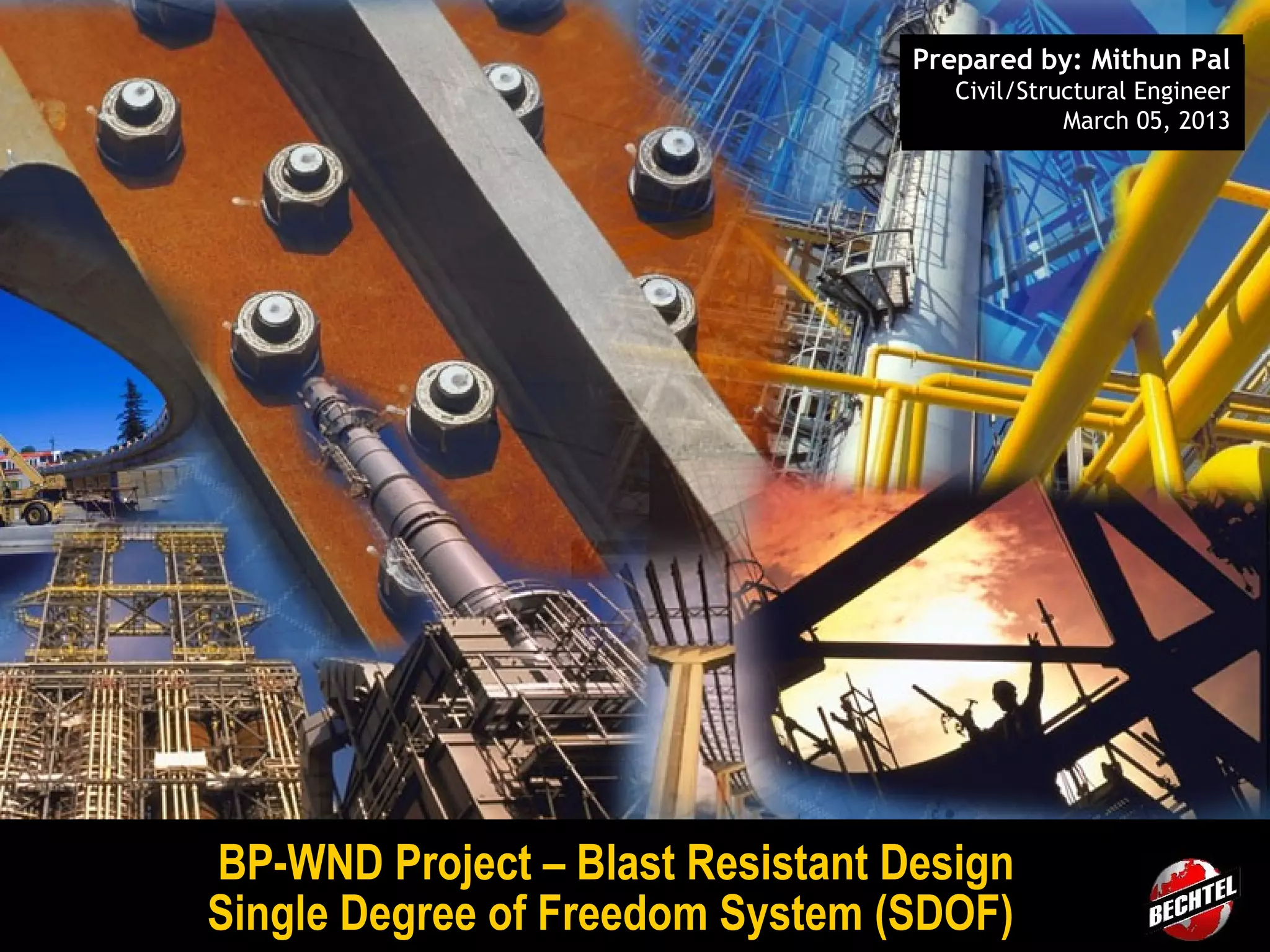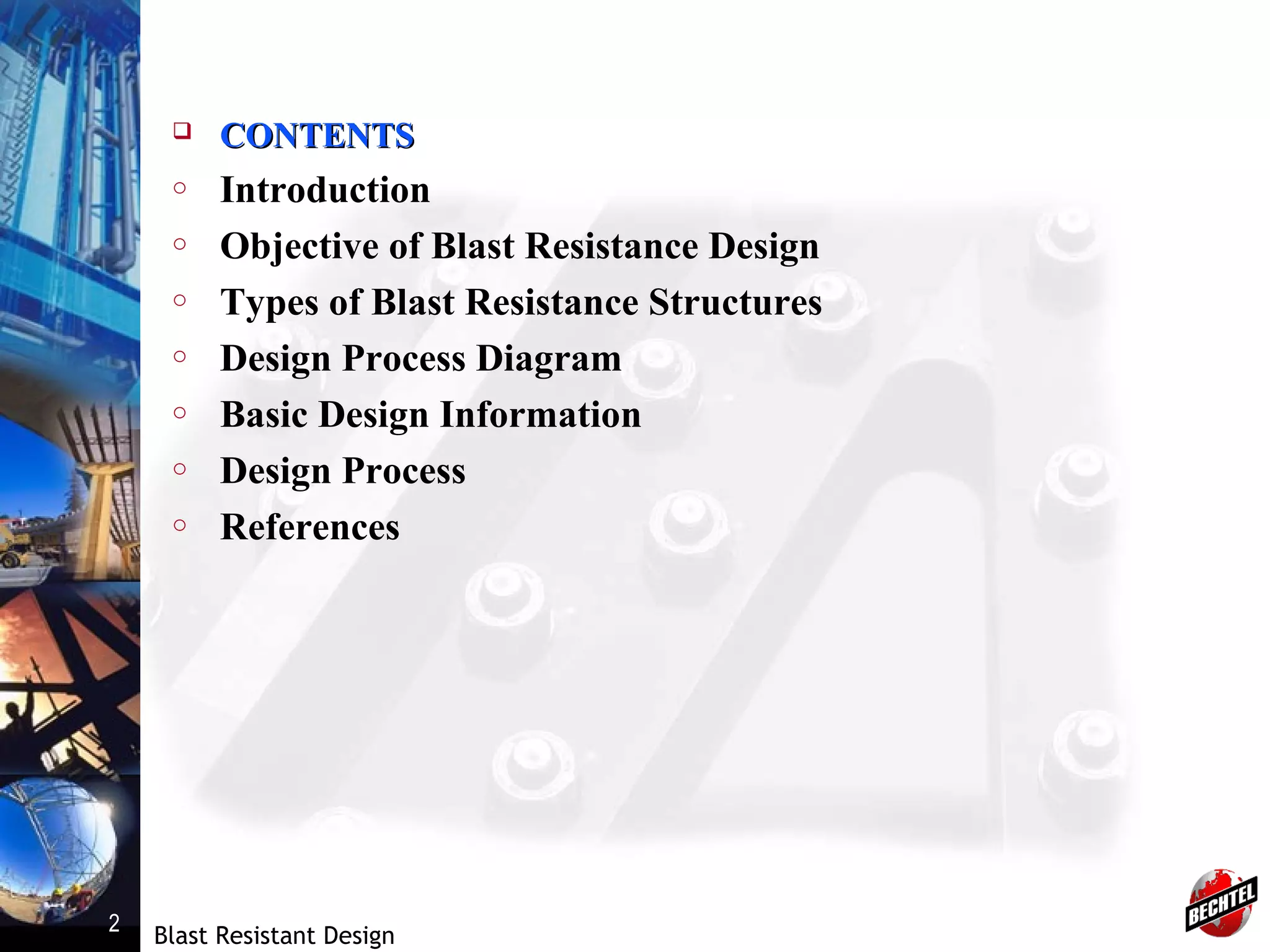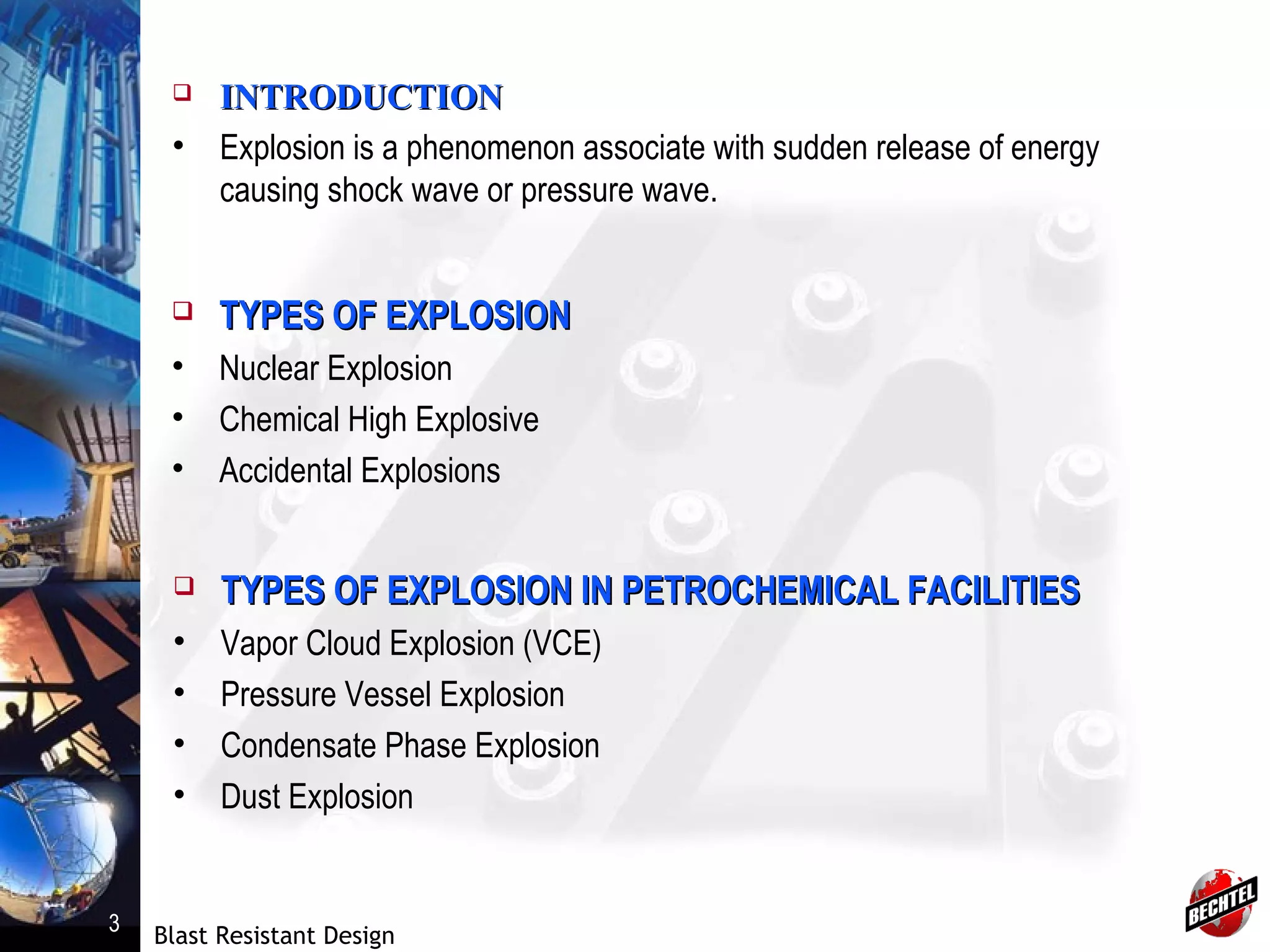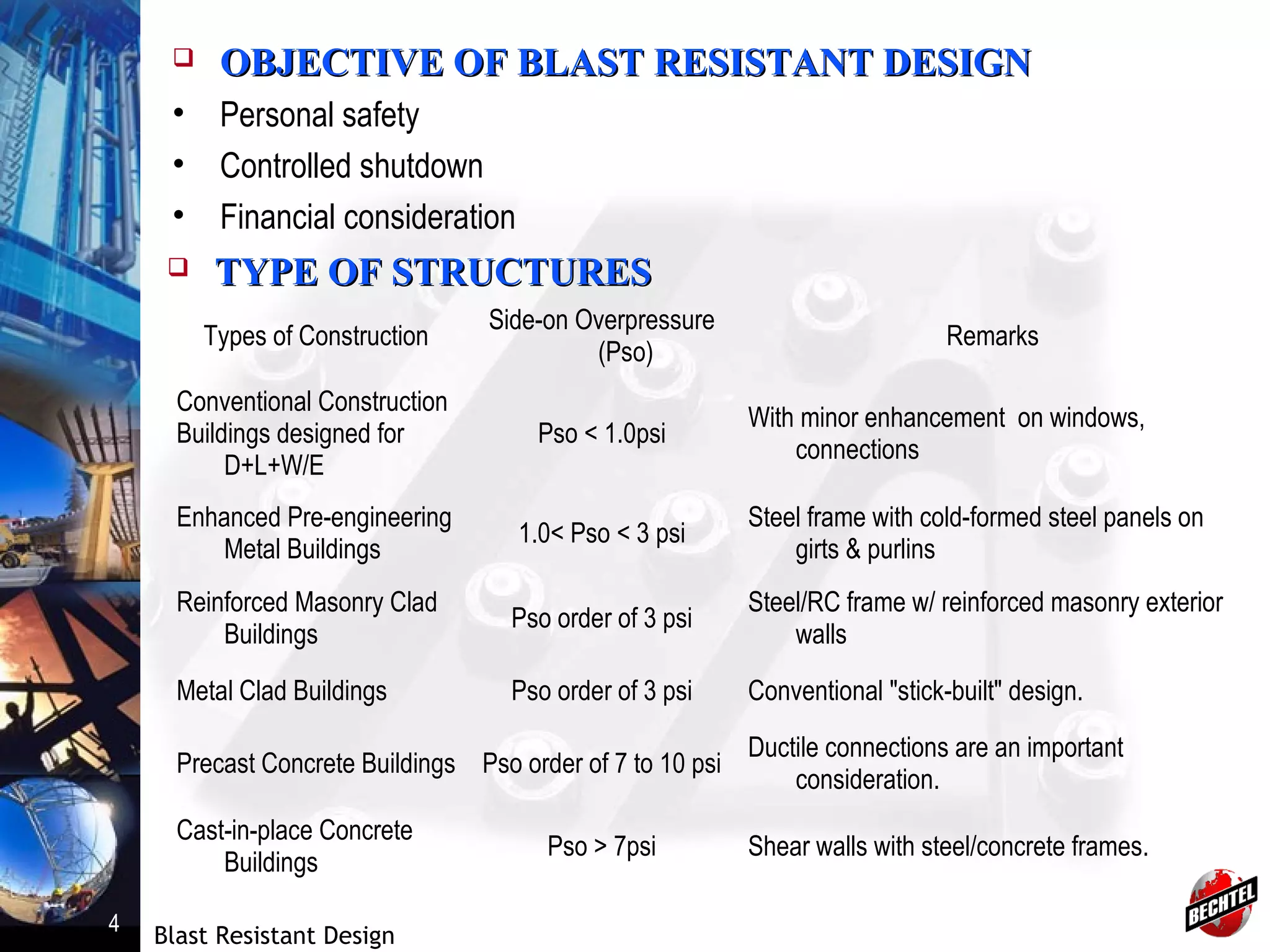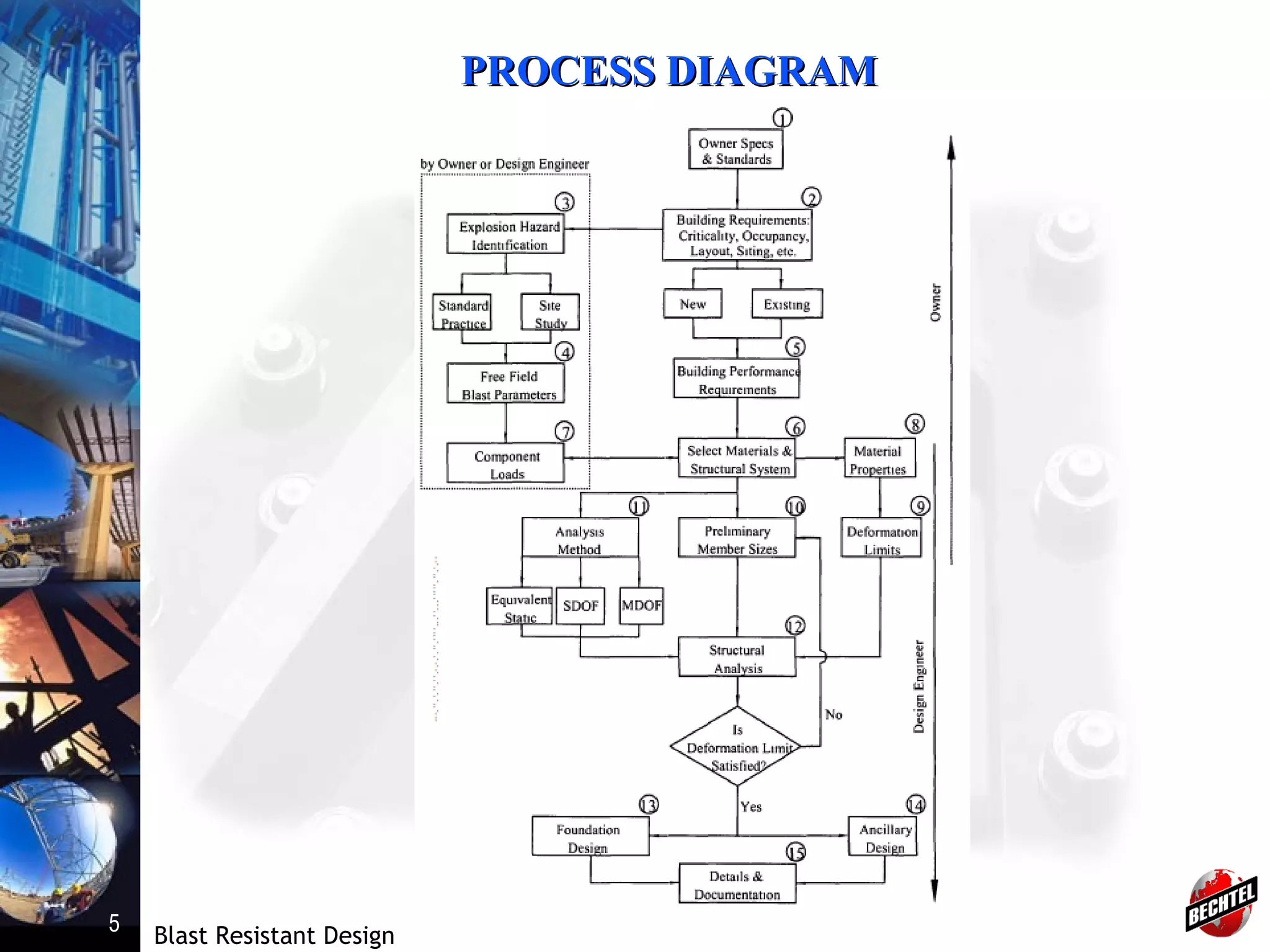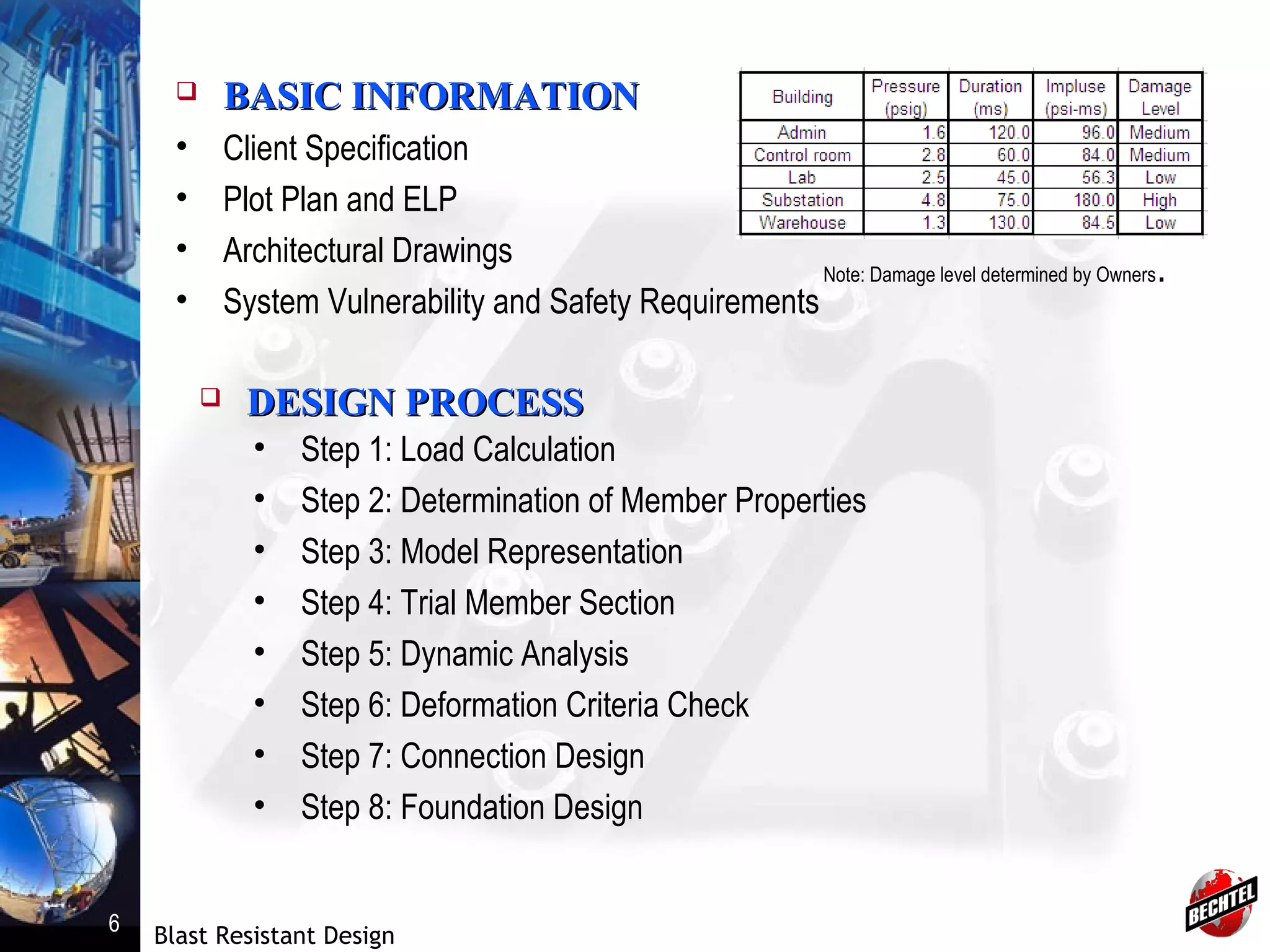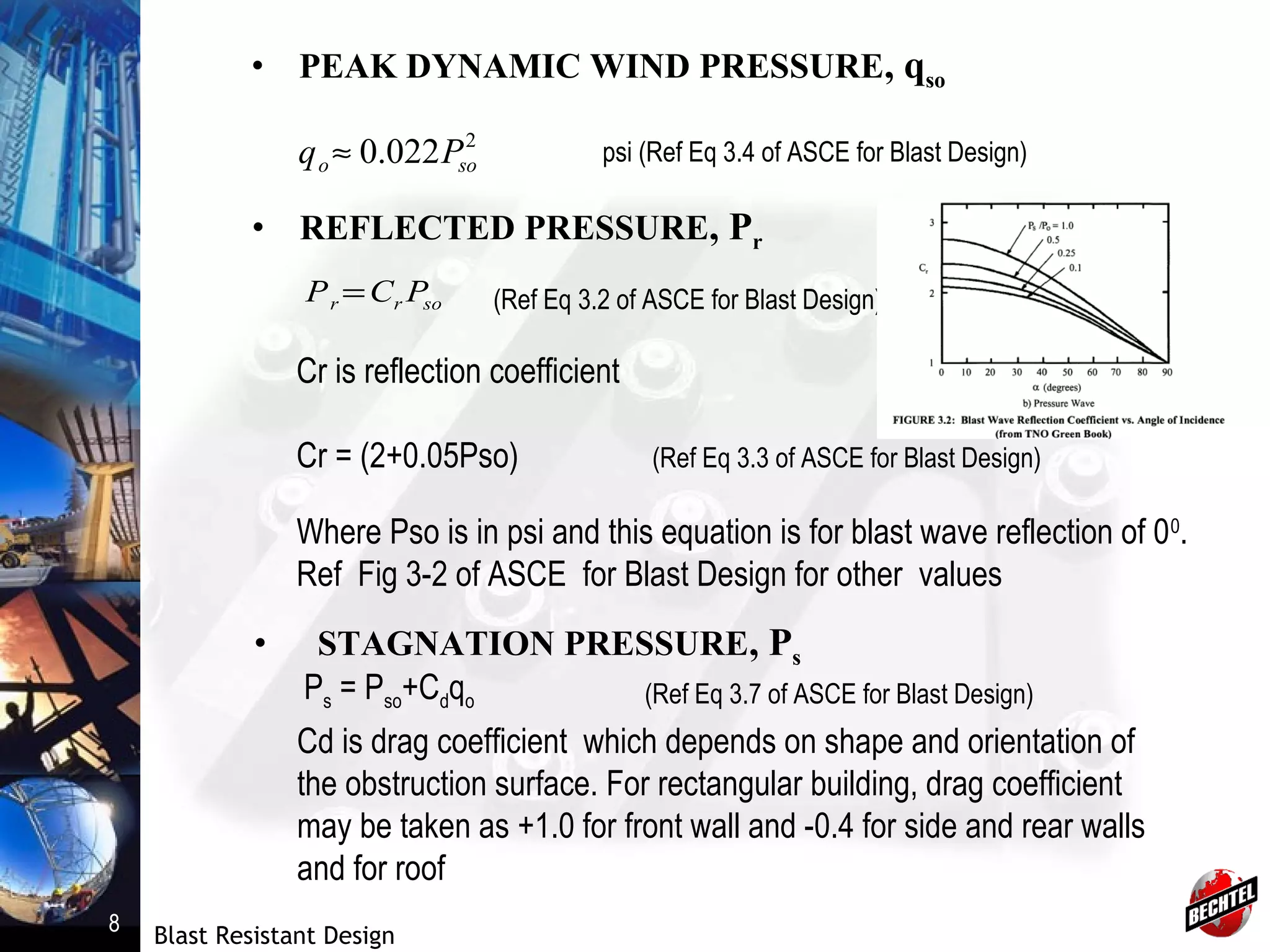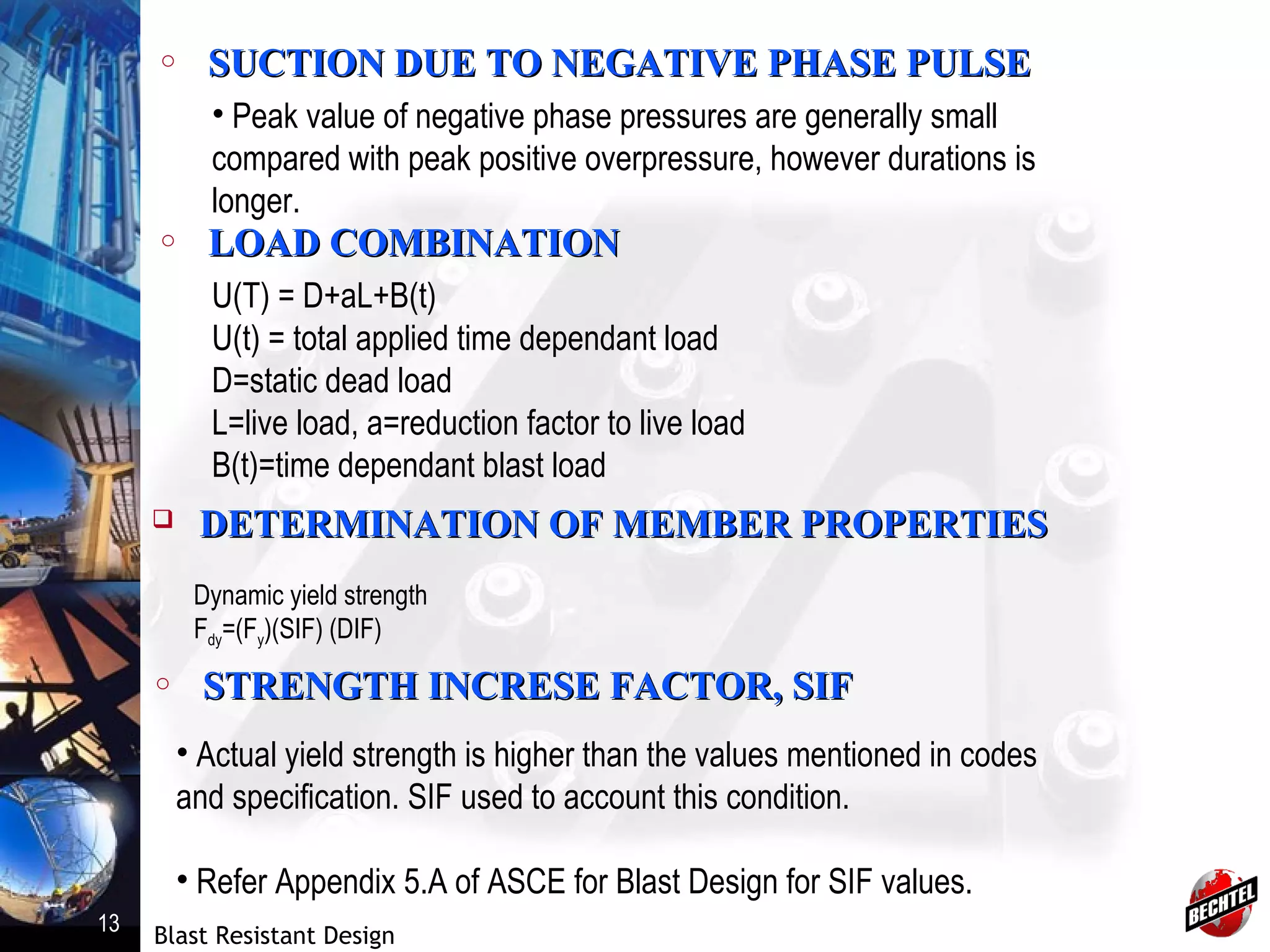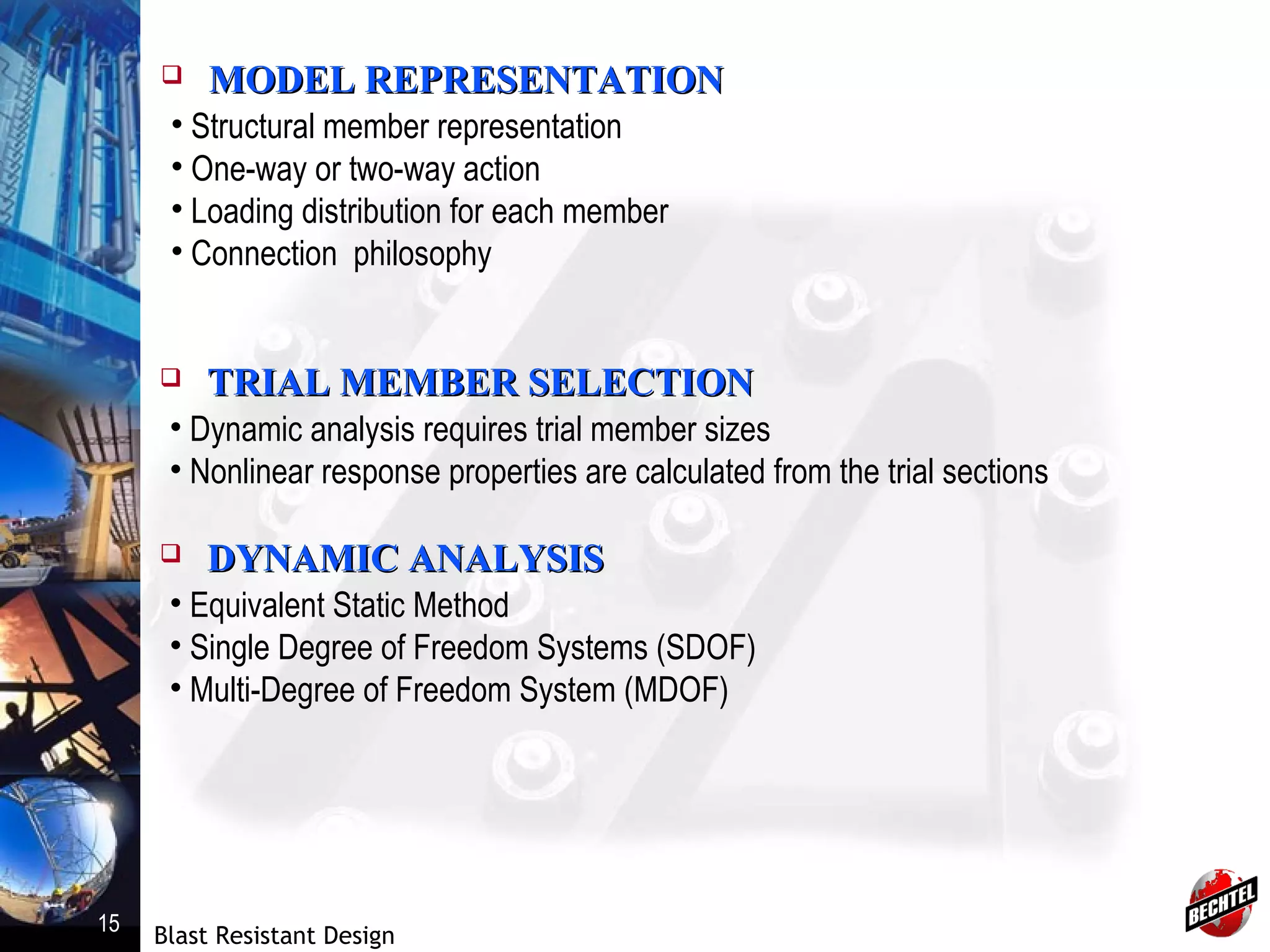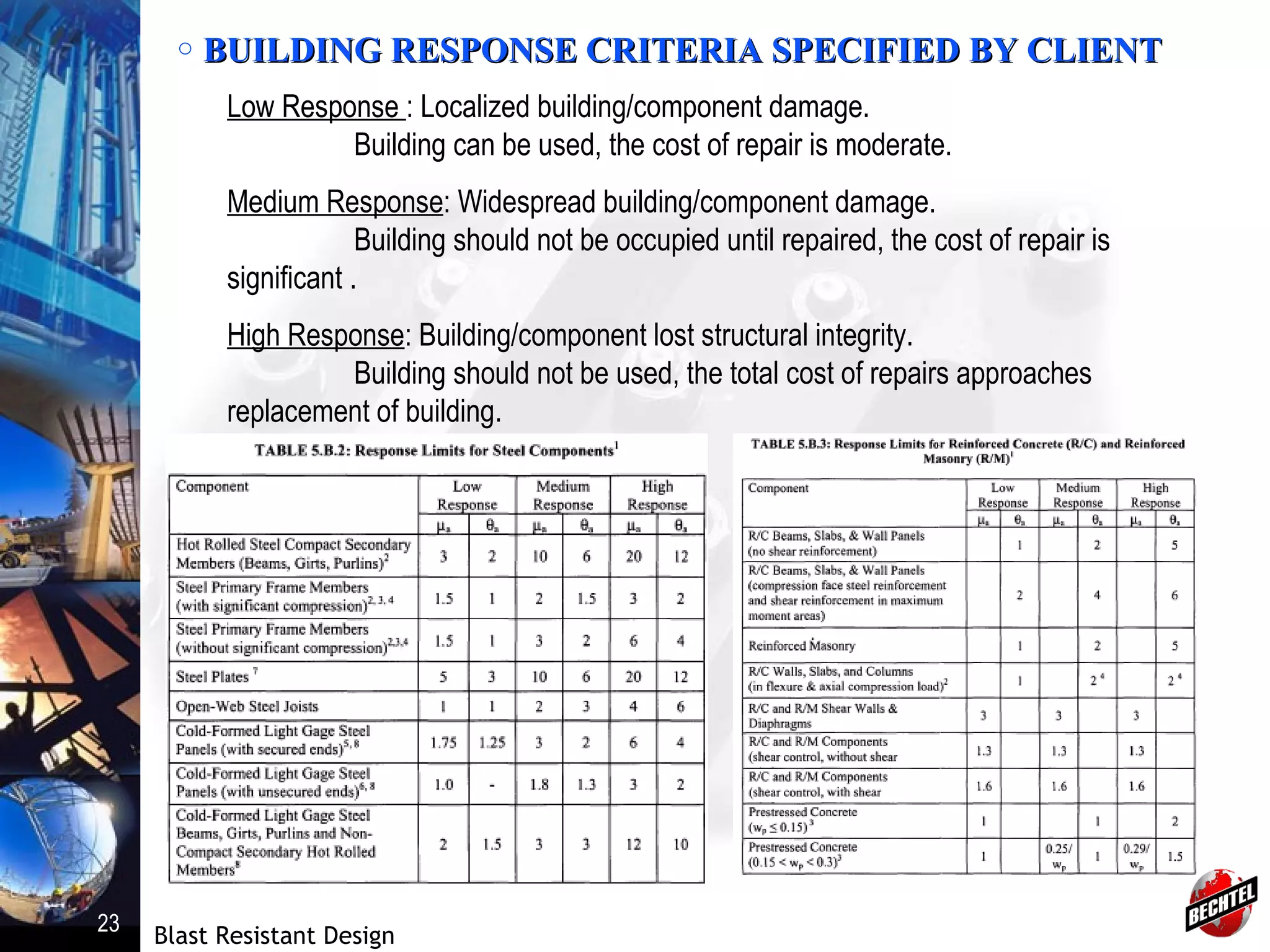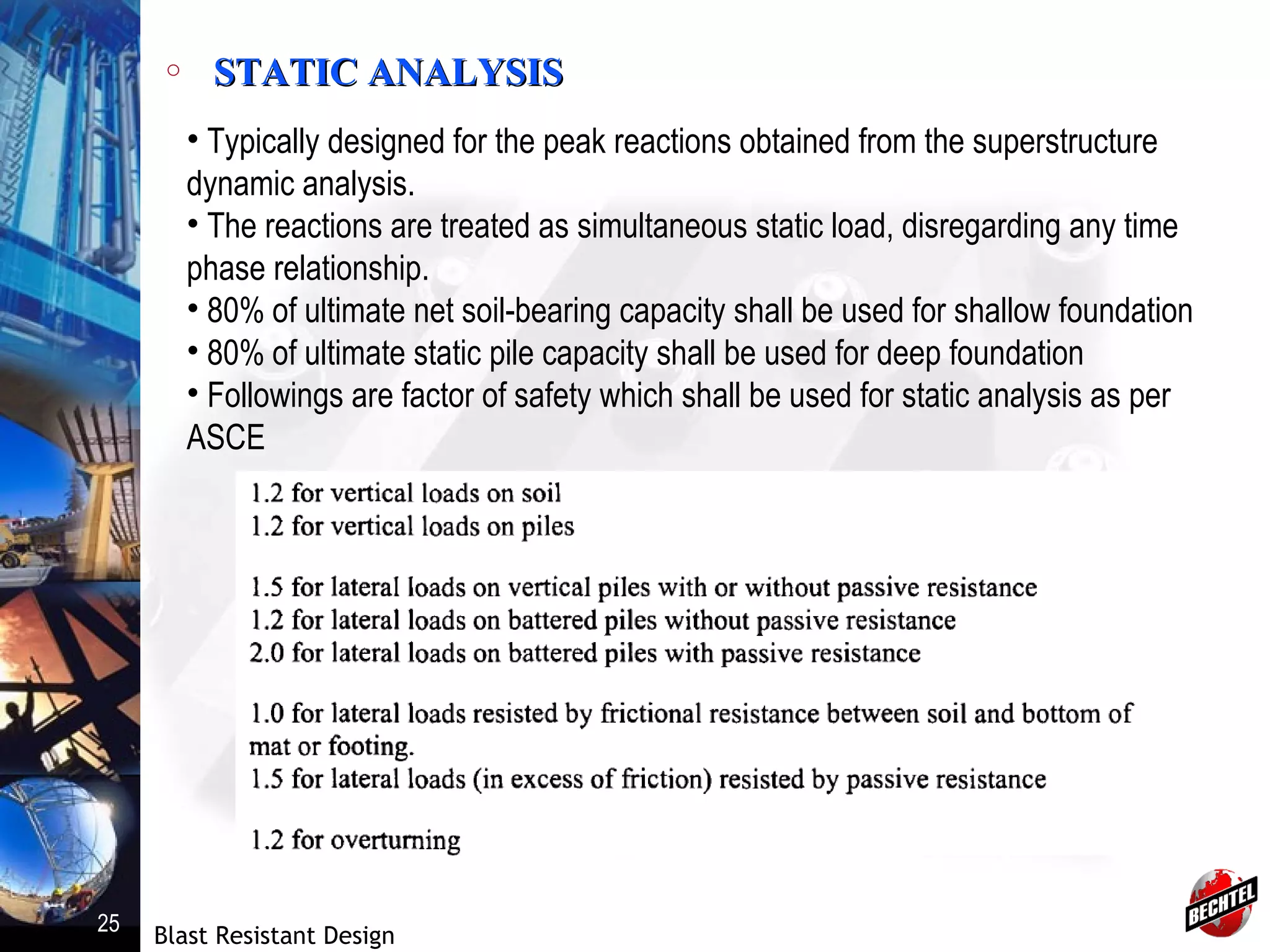This document provides information on blast resistant design of structures. It discusses the objectives of blast resistance, types of blast resistant structures, and outlines the basic design process. The design process involves calculating blast loads, determining member properties, modeling the structure, selecting trial member sections, performing dynamic analysis using single-degree-of-freedom or multi-degree-of-freedom methods, checking deformation criteria, designing connections, and designing foundations. Dynamic analysis methods like equivalent static method, SDOF, and MDOF are described for evaluating structural response to blast loads.
